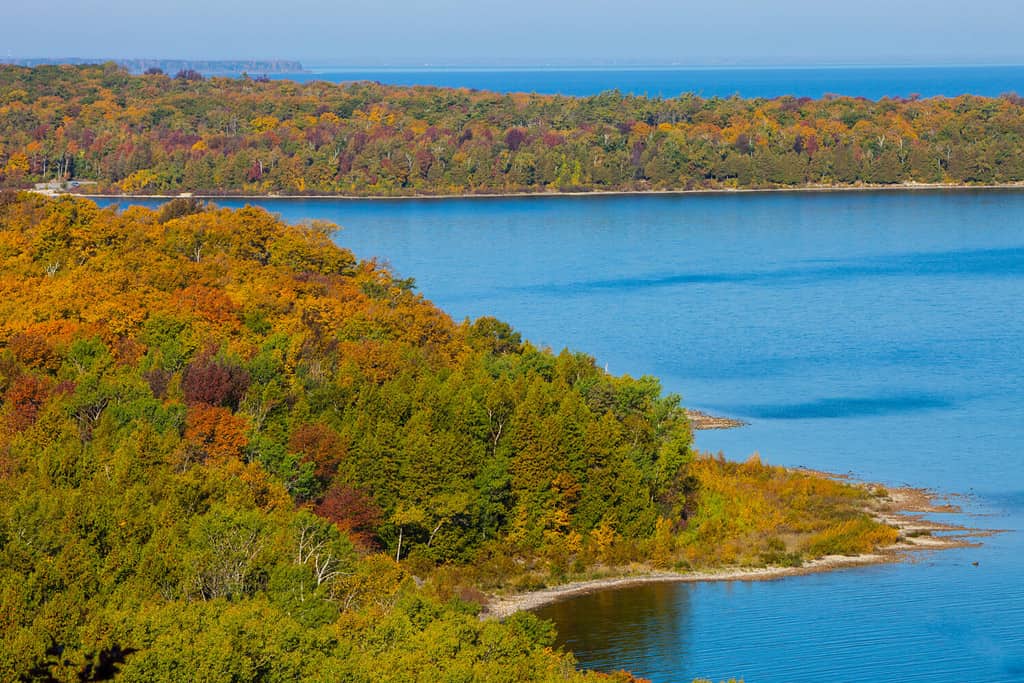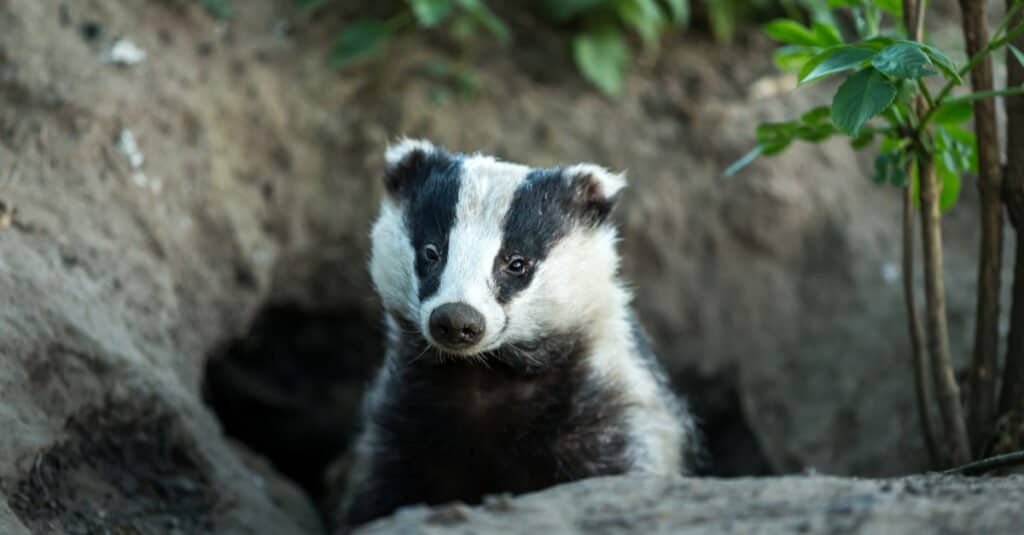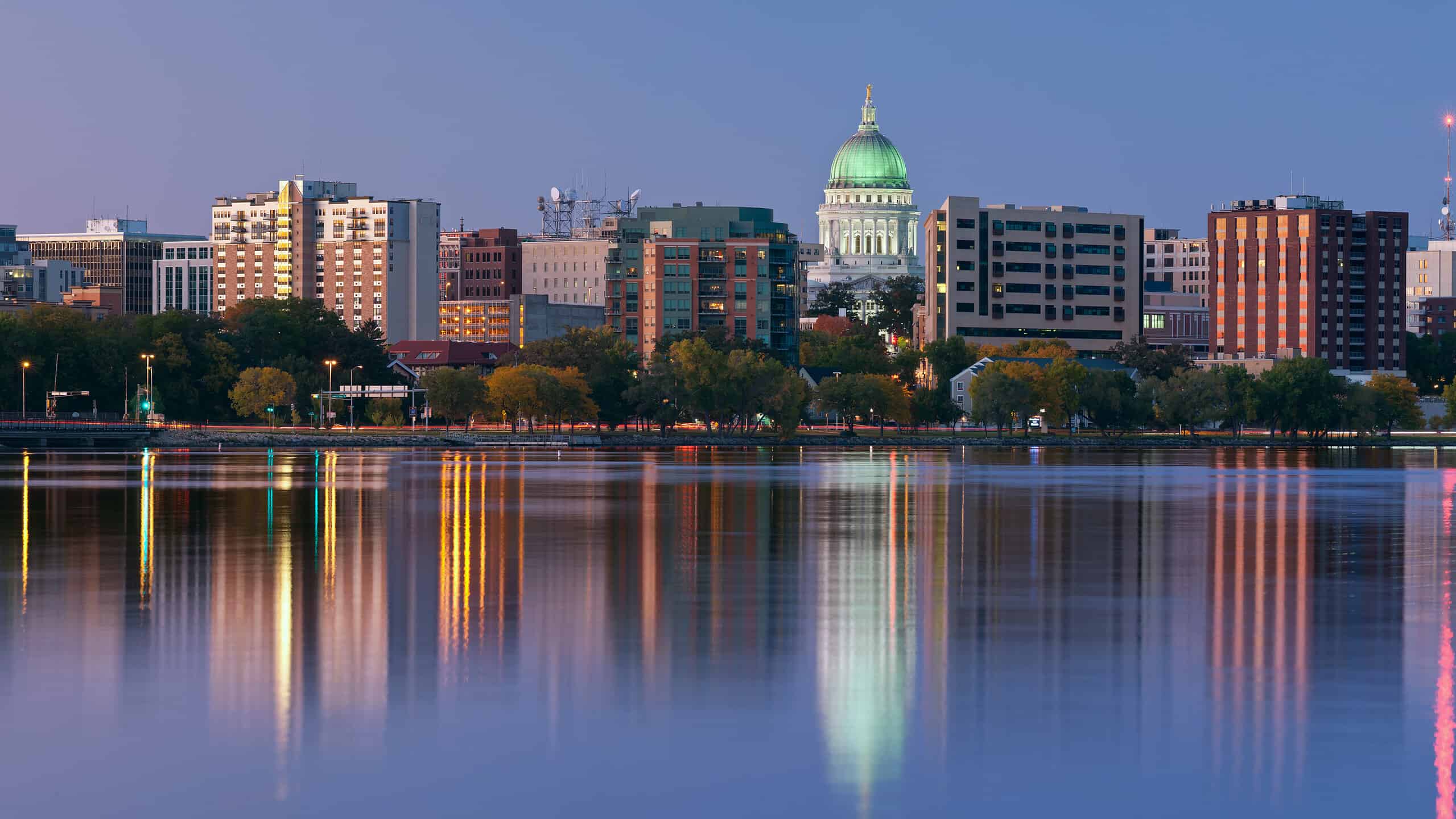One of the main dairy production states in the United States, Wisconsin has a lot to offer (in addition to its delicious cheese). This midwest state is known for its cold winters, hospitality, and the Green Bay Packers. It is 295 miles across from east to west and 320 from north to south. But it has an impressive 400 miles of shoreline on the Great Lakes. Discover just how big this midwestern state is and what makes it so special.
History of Wisconsin
Known as The Badger State, Wisconsin has always been rich in natural resources and a great area for growing crops. In prehistoric times, Wisconsin was covered by a glacier. As the glacier melted, lakes and rivers were left, along with rich soil. Today, Wisconsin is one of the states with the highest concentration of lakes.
Indigenous Native American tribes settled in Wisconsin and some continue to live in the area today. According to Marquette University, these include:
- Bad River Band of the Lake Superior Tribe of Chippewa Indians
- Forest County Potawatomi Community
- Ho-Chunk Nation
- Lac Courte Oreilles Band of Lake Superior Chippewa
- Lac du Flambeau Band of Lake Superior Chippewa
- Menominee Nation
- Oneida Tribe of Indians of Wisconsin
- Red Cliff Band of Lake Superior Chippewa
- St. Croix Chippewa Indians of Wisconsin
- Sokaogon Chippewa Community
- Stockbridge-Munsee Community, Band of Mohican Indians
Historians estimate that the earliest ancestors of the Native American tribes came to the Wisconsin area as early as 12,000 years prior. They built large mounds, many in the form of animals such as birds. Many remain and you can see them around Madison, Wisconsin. At the University of Wisconsin-Madison, they are marked with placards that describe their structure and historical significance.

Madison is the capital of Wisconsin.
©Structured Vision/Shutterstock.com
Wisconsin Statehood
European settlers first arrived in the area in the 1600s. It was settled by the French and then acquired by the British. The United States gained the region in 1783. Wisconsin became the 30th state in the United States in 1848. During this period, Wisconsin saw growth in its population and industry. Agriculture, especially dairy products, has always been a main staple of business in Wisconsin. Logging was booming in the early 20th century, especially in the heavily-wooded areas of northern Wisconsin. It has taken a backseat to dairy production since then.
Wisconsin played a prominent role leading up to the civil war. There were numerous places in the state that were active in the Underground Railroad, which helped enslaved people get to Canada. The Wisconsin State Supreme Court also ruled that the Fugitive Slave Act, which allowed officials to detain and return escaped enslaved people to their previous state, was unconstitutional.

Rocky Shores of the Apostle Islands National Lakeshore Near the Wisconsin Shoreline of Lake Superior
©Gottography/Shutterstock.com
Climate in Wisconsin
As a distinctly northern state, the climate in Wisconsin can get very cold in the winter. The state enjoys all four seasons: summer, fall, winter, and spring. The summers can be hot but are relatively short. Winter is typically the longest and harshest season. This can be a benefit to those who enjoy winter sports, including speedskating, hockey, snow-skiing, cross-country skiing, and others. Many of the northern lakes stay frozen well into the spring, making them great ice-fishing destinations.
How many acres is Wisconsin?
The entire state covers roughly 35 million acres. According to the Wisconsin Department of Natural Resources, 16 million of that is forested land. Just over half of those forests are privately owned, with the other half being divided between Native American ownership, national forests, state forests, cities and municipalities, and other corporations and entities.

Wisconsin has plenty of land and water included in its borders.
©K Hanley CHDPhoto/Shutterstock.com
How many square miles (and square kilometers) is Wisconsin?
Wisconsin measures 65,496 square miles, which is the equivalent of 169,635 square kilometers. That includes inland waters and parts of Lake Michigan and Lake Superior, two of the great lakes that have portions within Wisconsin. The actual land is closer to 54,158 square miles.
This state is slightly taller than it is wide. The greatest length, from north to south, in the state is 320 miles. The greatest width, from east to west, is 295 miles.
How big is Wisconsin compared to other states?
According to the U.S. Census Bureau, Wisconsin’s area makes up roughly 1.7% of the overall United States. It is the 23rd largest state in the U.S. It is around the same size as Florida and Missouri. However, the shapes of each state are very different, so it can be difficult to tell. Each state covers between 65,000 and 70,000 square miles, however.
Some states are much larger. For example, Alaska covers 665,384 square miles according to the Census Bureau, and is the largest state. Wisconsin could fit in this area 10 times and still have room left over. Texas, another large state, is four times as large as Wisconsin.
Other states are much smaller. Rhode Island, the smallest state, could fit in Wisconsin more than 42 times. Massachusetts, Hawaii, Maryland, New Hampshire, New Jersey, Vermont, and Rhode Island can all fit inside Wisconsin nestled close together.
Population of The Badger State
Even though it is ranked 23rd in size, Wisconsin is the 20th most populated state. There are roughly 5.9 million people who call the state home. Compared to its neighbor Michigan, which has over 10 million people, Wisconsin is quite small when it comes to population. Michigan is a larger state, however, with 96,714 square miles compared to Wisconsin’s 65,496.
Wisconsin vs. Other Midwest States: A Comparison
| State | Area (mi2) | Area (km2) | Acreage | Population |
| Wisconsin | 65,496 | 169,635 | 35 million | 5.9 million |
| Kansas | 82,278 | 213,099 | 52.6 million | 2.9 million |
| Minnesota | 86,936 | 225,163 | 51.2 million | 5.7 million |
| Nebraska | 77,348 | 200,330 | 49.5 million | 2 million |
| Missouri | 69,707 | 180,540 | 44.2 million | 6.2 million |
| Michigan | 96,714 | 250,488 | 61.9 million | 10 million |
| Iowa | 56,273 | 145,746 | 35.7 million | 3.2 million |
| Illinois | 57,914 | 149,996 | 37.1 million | 12.5 million |
| Ohio | 44,826 | 116,098 | 28.6 million | 11.7 million |
| Indiana | 36,420 | 94,327 | 23.3 million | 6.9 million |
Animals in Wisconsin
With so much wooded area, Wisconsin is home to some of the most iconic large and small animals in North America. White-tailed deer, black bears, moose, and wolves are all common in the more rugged parts of the state’s wilderness. Robins, red foxes, and squirrels can be seen throughout towns and cities.
Nicknamed the Badger State, Wisconsin does have its fair share of badgers. However, the name has historical significance and also refers to the miners who originally settled the area and the way that they dug into the land, similar to badgers.

Badgers dig holes in the ground.
©Coatesy/Shutterstock.com
Notable Cities in Wisconsin
Madison is the state capital and is located in the central part of the state. It is the home of the University of Wisconsin-Madison, the Overture Center for the Arts, and the Henry Vilas Zoo. Even though it is not the largest city in the state, Madison has a lot to offer and has a decent tourism industry.
Milwaukee, located on Lake Michigan, is the largest city in the state. It has 598,078 people. Miller Brewing Company has its headquarters in Milwaukee and accounts for a big portion of the city’s economy and industry. Other notable sights include the Harley Davidson Museum and, of course, Lake Michigan.
Green Bay is home to the Green Bay Packers. The city has a large and loyal fanbase for the NFL team. It is located on the shores of Green Bay, part of Lake Michigan. The city is also near Lake Winnebago. There are plenty of opportunities for outdoor adventures in this part of the state.
Thank you for reading! Have some feedback for us? Contact the AZ Animals editorial team.








